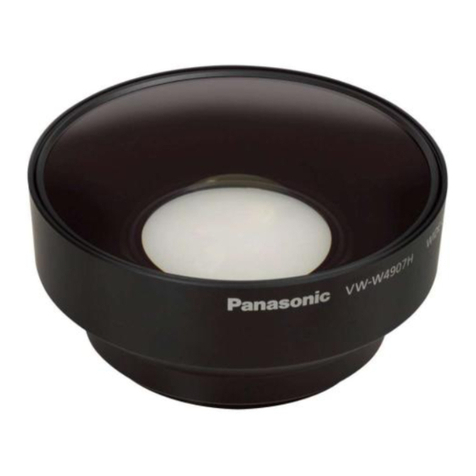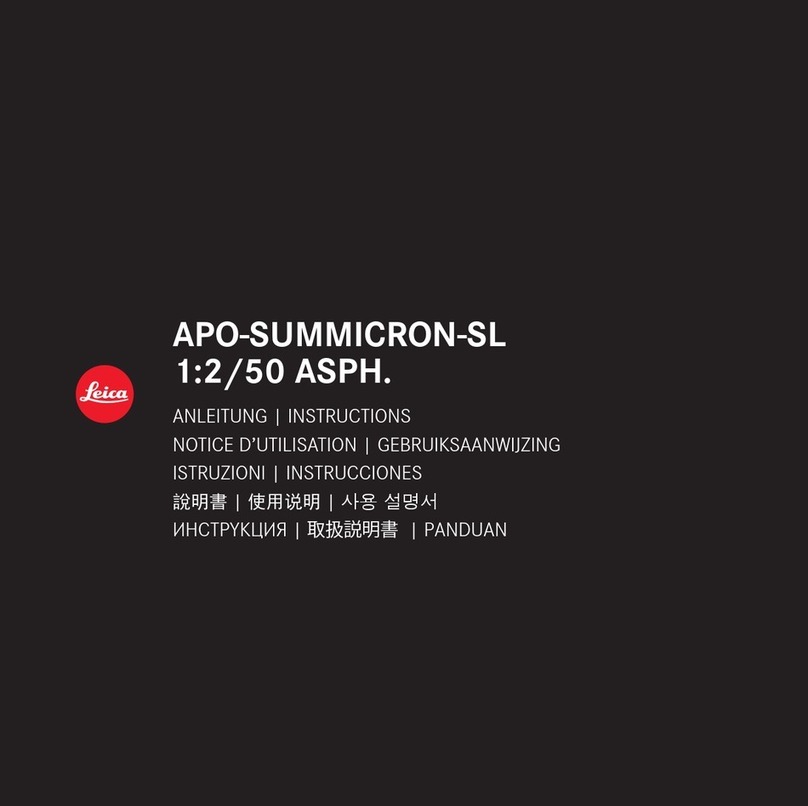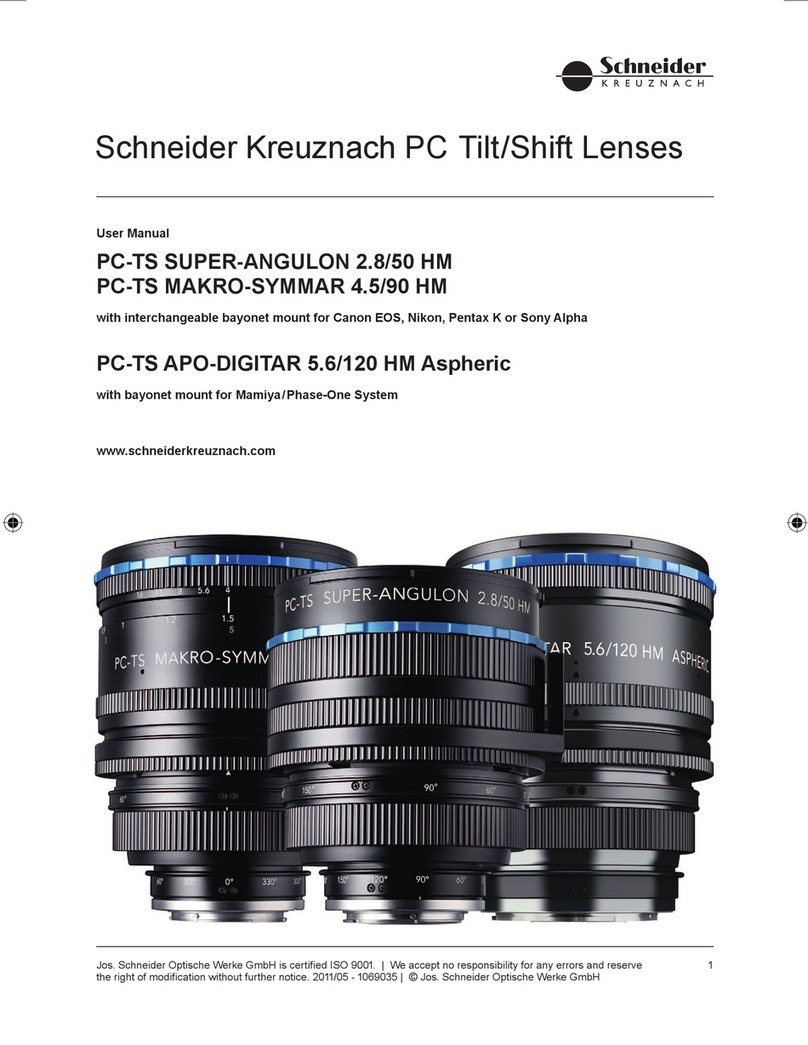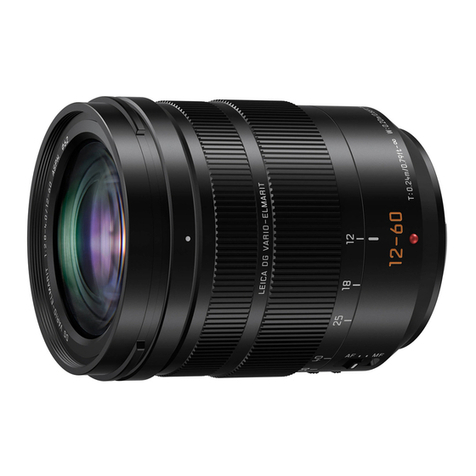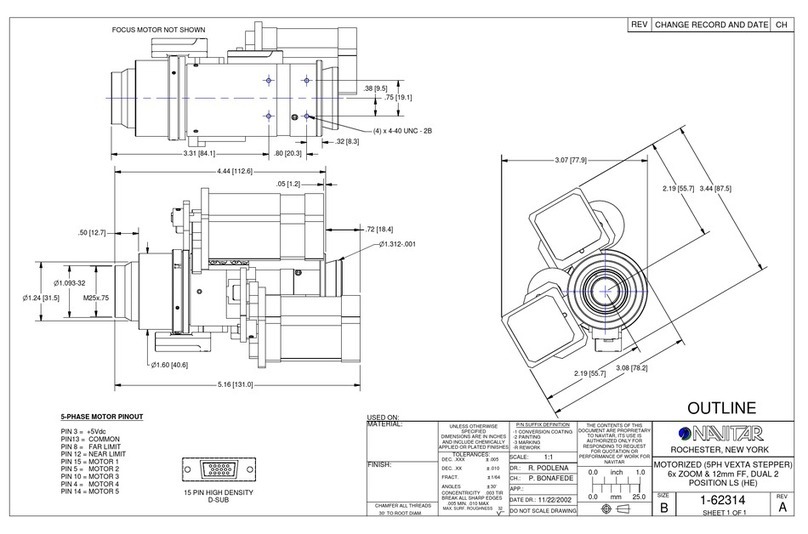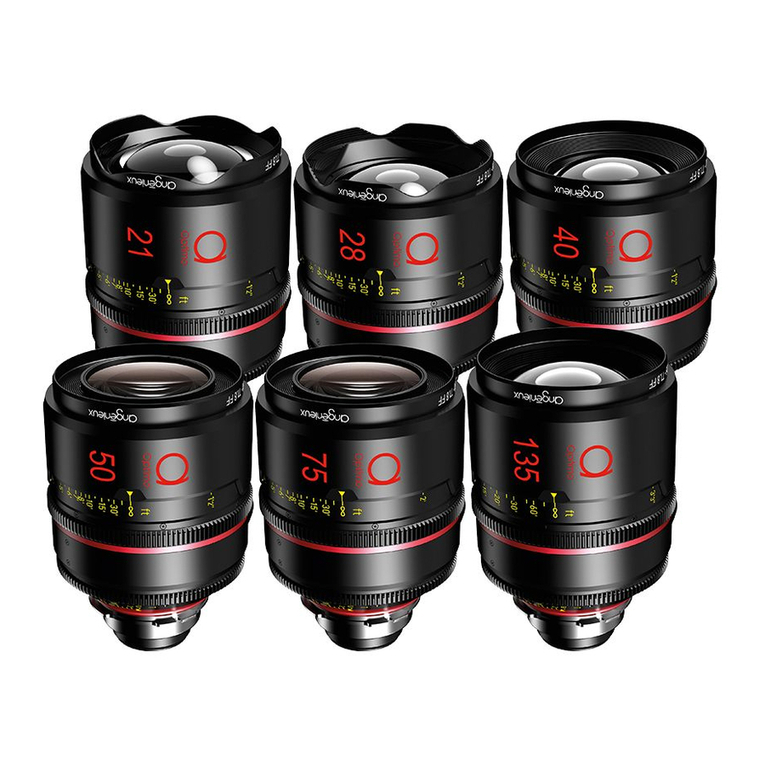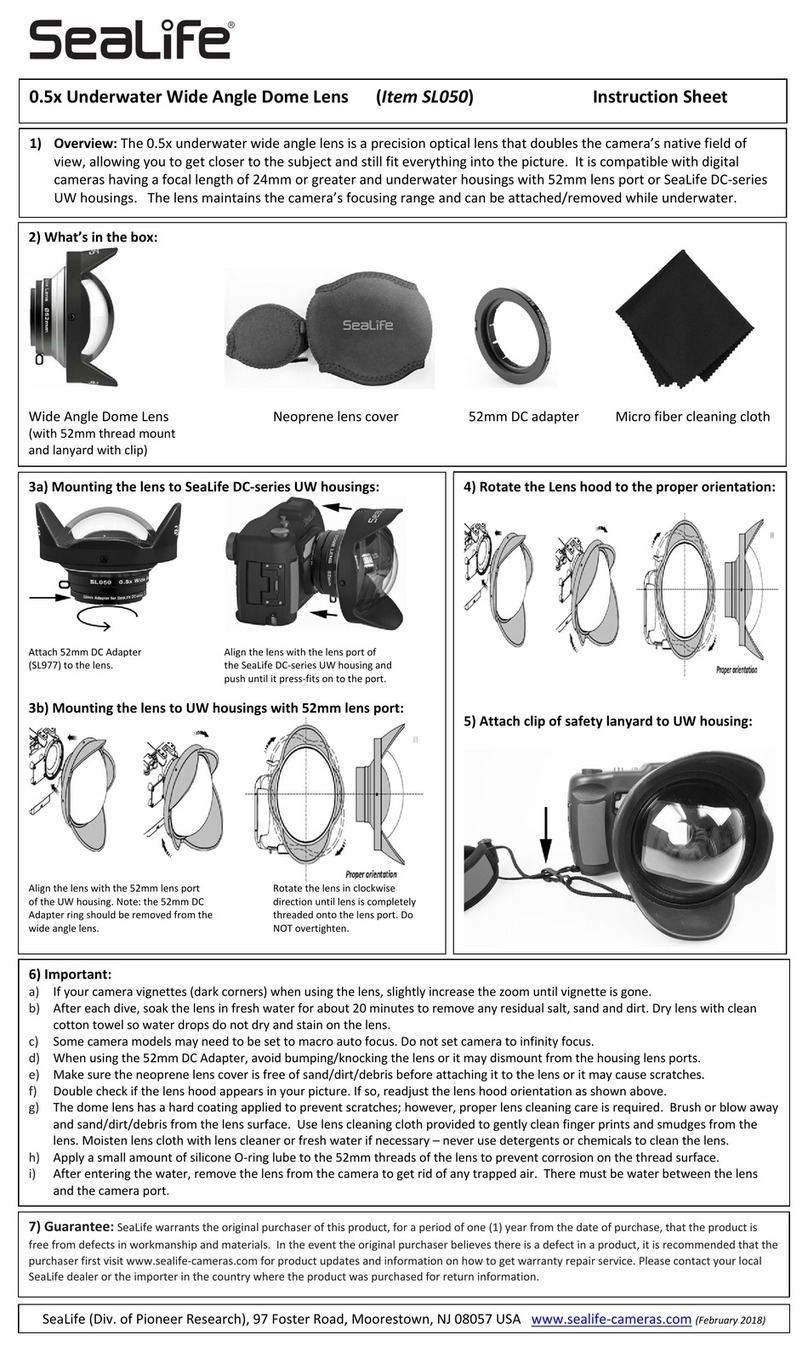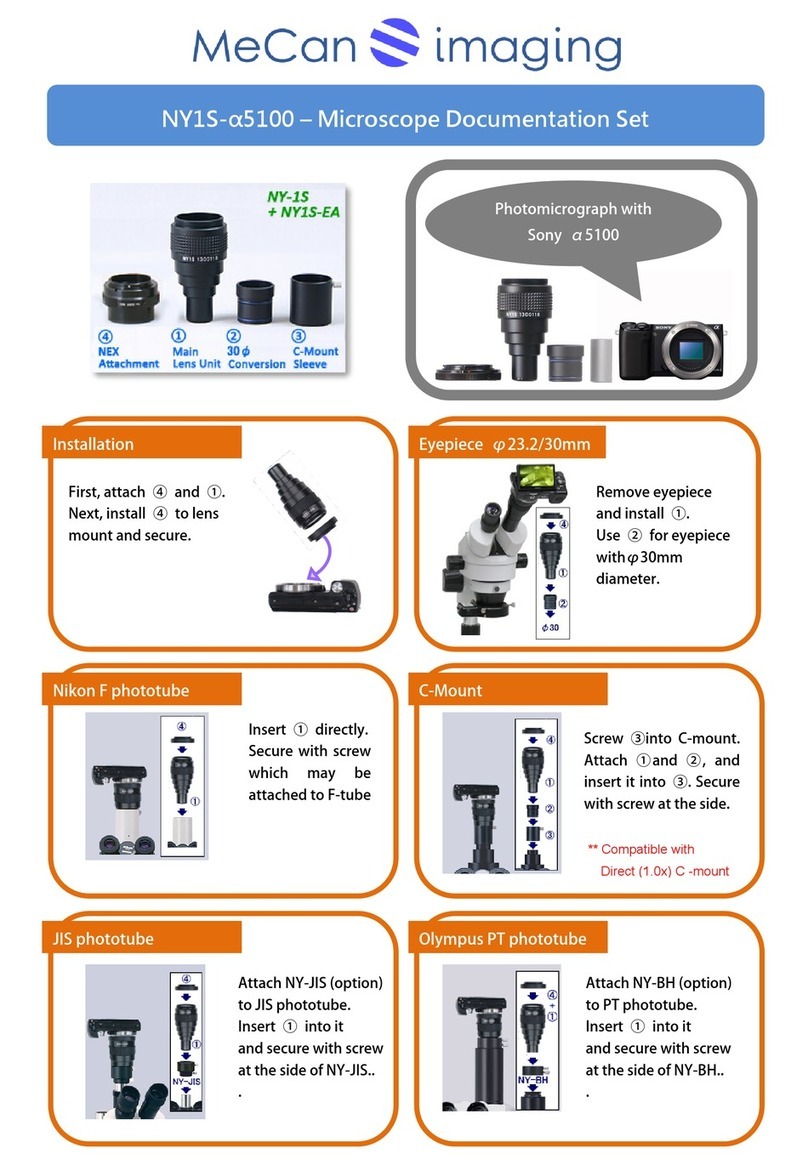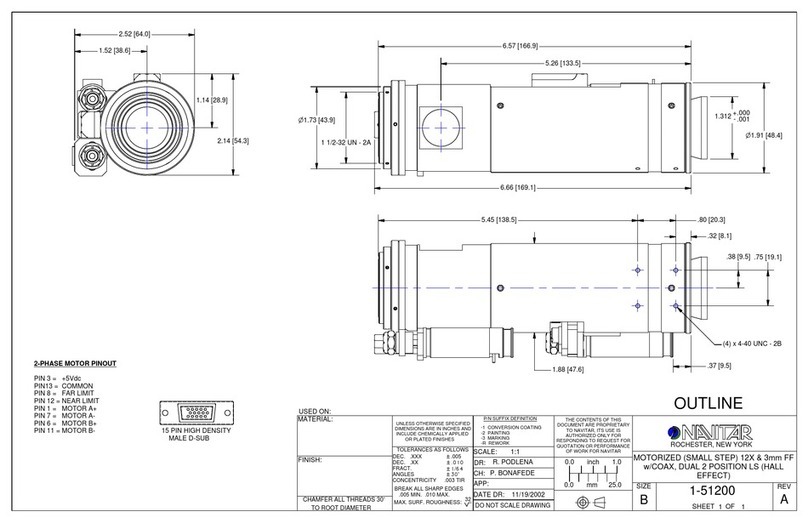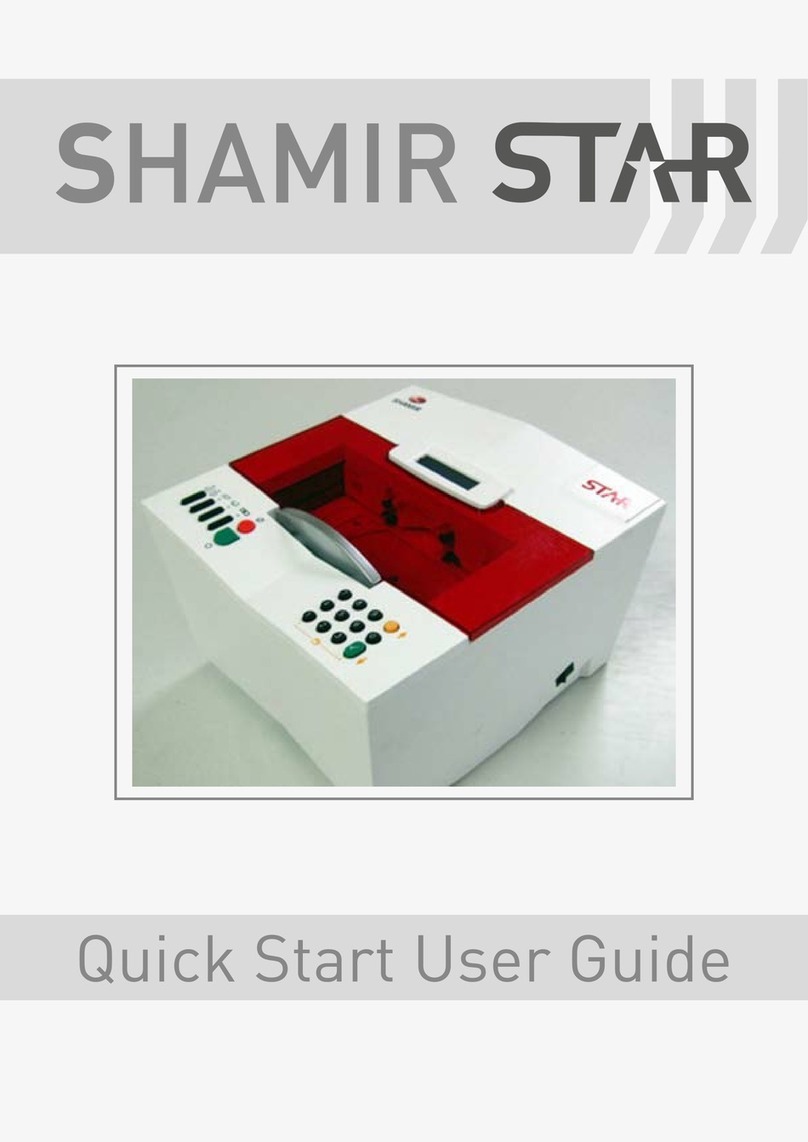
Jos. Schneider Optische Werke GmbH is certified ISO 9001. | We accept no responsibility for any errors and reserve 5
the right of modification without further notice. 2011/05 - 1069035 | © Jos. Schneider Optische Werke GmbH
Specications
Effective focal length . . 51.75 mm
Optical design . . . . . . 9 elements in 9 groups
Coating . . . . . . . . . MC (multicoating)
Max. sensor format . . . 24 mm x 36 mm
Image circle diameter . . 79.2 mm (at innity)
Maximum shift reserve . 12 mm in every direction
Maximum tilt angle . . . 8° in every direction
Focusing . . . . . . . . manually
Nearest distance . . . . 0.65 m from sensor plane
Largest image scale . . 1:9.2 (w/o accessories)
Smallest subject size . . 220 mm x 330 mm
Aperture setting . . . . . manually, pre-set setting ring
Aperture setting range . 2.8 to 32 in 1/3 EV steps
Filter/accessory mount . M 95 x 1 and bayonet VIII
Lens shade . . . . . . . Accessory, threaded
Total length . . . . . . . 128.4 mm (EOS bayonet)
Maximum diameter . . . 108 mm (w/o tripod mount)
Weight . . . . . . . . . 1400 g
Tripod mount thread . . 3/8" and 1/4", 360° rotary
Available camera monts Canon EOS, Nikon,
Sony Alpha, Pentax K
Specications
Effective focal length . . 90.72 mm
Optical design . . . . . . 6 elements in 4 groups
Coating . . . . . . . . . MC (multicoating)
Max. sensor format . . . 24 mm x 36 mm
Image circle diameter . . 87.8 mm (at innity)
Maximum shift reserve . 12 mm in every direction
Maximum tilt angle . . . 8° in every direction
Focusing . . . . . . . . manually
Nearest distance . . . . 0.57 m from sensor plane
Largest image scale . . 1:4 (w/o accessories)
Smallest subject size . . 95 mm x 143 mm
Aperture setting . . . . . manually, pre-set setting ring
Aperture setting range . 4.5 to 32 in 1/3 EV steps
Filter/accessory mount . M 95 x 1 and bayonet VIII
Lens shade . . . . . . . Integrated (recessed lens)
Total length . . . . . . . 138.8 mm (EOS bayonet)
Maximum diameter . . . 108 mm (w/o tripod mount)
Weight . . . . . . . . . 1110 g
Tripod mount thread . . 3/8" and 1/4", 360° rotary
Available camera monts Canon EOS, Nikon,
Sony Alpha, Pentax K
Specications
Effective focal length . . 123.62 mm
Optical design . . . . . . 6 elements in 4 groups
Coating . . . . . . . . . MC (multicoating)
Max. sensor format . . . 45 mm x 60 mm
Image circle diameter . . 153 mm (at innity)
Maximum shift reserve . 12 mm in every direction
Maximum tilt angle . . . 8° in every direction
Focusing . . . . . . . . manually
Nearest distance . . . . 0.84 m from sensor plane
Largest image scale . . 1:5.3 (w/o accessories)
Smallest subject size . . depending in the digital back
Aperture setting . . . . . manually, pre-set setting ring
Aperture setting range . 5.6 to 32 in 1/3 EV steps
Filter/accessory mount . M 95 x 1 and bayonet VIII
Lens shade . . . . . . . Integrated (recessed lens)
Total length . . . . . . . 135.6 mm
Maximum diameter . . . 108 mm (w/o tripod mount)
Weight . . . . . . . . . 1110 g
Tripod mount thread . . 3/8" and 1/4", 360° rotary
Available camera mont . Mamiya / Phase One
Digital back P25+ . . . . 194 mm x 259 mm
Digital back P30+/P40+ 175 mm x 234 mm
Digital back P45+ . . . . 195 mm x 260 mm
Digital back P65+ . . . . 214 mm x 285 mm
➞
PC-TS Anleitung 2011.indd 5 25.05.11 20:45

